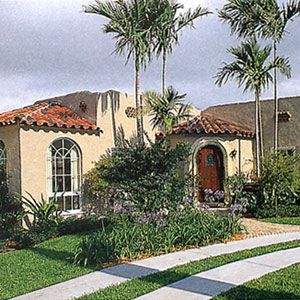
As an idea, a garden would seem to be both simple and fairly universal.
And yet when based on our individual experiences, desires and personalities, garden spaces actually evoke a variety of different responses, both practical and emotional. Just as diverse are the
approaches to the creation of contemporary gardens. Whereas it was perhaps once the predominant function of a garden to supply nourishment for the body, sustenance of a different sort is what we generally hope to achieve in the personal outdoor spaces we create for ourselves today.
Interior residential spaces allow for differing uses through the partitioning of distinct rooms — a practice that can be equally applicable in the garden. Interior spaces provide for sleeping, dining, reading, bathing and other needs, so why not similar “rooms” designed for outdoor space? West Palm Beach homeowner Rob Thompson, for instance, plans to use landscaping around the new pool in his backyard to create a harmonious space with a soothing tropical feel that will lend itself easily to dining, swimming, socializing, and relaxing.
To be sure, the concept of the exterior garden room is not at all new. We can see cultural applications of this idea in artifacts from ancient Egypt to the Baroque gardens of 18th-century France to modern garden design. A miniature painting from 15th-century Europe might show a large garden area divided by a lattice fence into separate areas of activity: a garden section divided into beds for herbs, a large fountain at the center, a grassy space for dancing or strolling, with large trees providing shade — not much different from what we might imagine for ourselves today. However, modern garden rooms tend to be more intimate, often providing a brief but valued outdoor escape from the strains of modern life.
A defining element in any garden room is a sense of enclosure. This can be as simple as a herbaceous border or tall hedge; as elaborate as a maze or garden structure such as a pool or pergola. The garden room may be made entirely for viewing and contemplation. It may define special areas of activity or passivity and, through layout, can provide both
visual and physical access to rooms for specific uses (i.e., roses, sculpture, showering, or reading) — or even access to a “borrowed” landscape through the selected framing of views beyond an owner’s property. Garden ornaments (benches, pottery, sculpture) may be used to introduce an element of surprise into a garden room and indicate a change in the tone, direction, or speed with which the garden is traversed.
Garden rooms can reflect or stimulate any number of moods and uses — a sense of romance, humor, introspection, idiosyncrasy, formality, informality, as well as flexibility for the needs of contemporary life. Carefully designed, garden rooms can provide space suitable for a child’s birthday party on Saturday, a barbecue on Sunday, a ladies’ tea on Tuesday, and virtually countless other activities.
Another trend of late is that many landscape architects are receiving
requests for the inclusion of such elements as garden showering spaces, perhaps an indication of an instinctive need for cleansing and reanimation that is being met by the domestic garden. Other kinds of requests suggest that many people continue to want their garden spaces to lend themselves easily to a sense of intimacy, ceremony, or tradition. Often people will ask for a design to include sequestered spots where lovers might steal a kiss or a hug; or changes in elevation — even
small ones — where a couple or their children might stand while being married.
No matter the size, shape, or location of your exterior space, remembering these basic tenets while designing for your individual needs and location will provide a personal solution for your garden rooms. Your garden rooms, in turn, will offer you a setting in which to find satisfaction, relaxation and enjoyment for many years.
As far as designing garden rooms is concerned, there are no hard and
fast rules with the possible exceptions of simplicity and harmony.
If you are considering designing a garden room, here are a few
tips:
Start by making a list of all the functions you definitely want
your garden rooms to serve.
Then, design a pattern that fits the ground plan of the area being
considered, tying all of the functions together with the pattern.
Make sure the design is appropriate to the spaces surrounding the garden. Take into account views into and out of the garden room(s); the orientation of the space; and how much sunlight penetrates each space and for what duration in each season.
Consider the shape and type of paving (or absence of) to use within
the rooms and how it may provide sequence to features such as water,
trellis or patios.
As far as I know, landscape architecture is one of the only art
forms utilizing all five senses, so include elements in the garden that
engage sight, sound, taste, fragrance, and touch.
Functional needs for lighting, irrigation, drainage, and plant
selections and placement, as well as the need for electricity, should
also be thoughtfully examined.
Jeff Blakely owner of Blakely & Associates, was the landscape architect for the West Palm Beach House.

